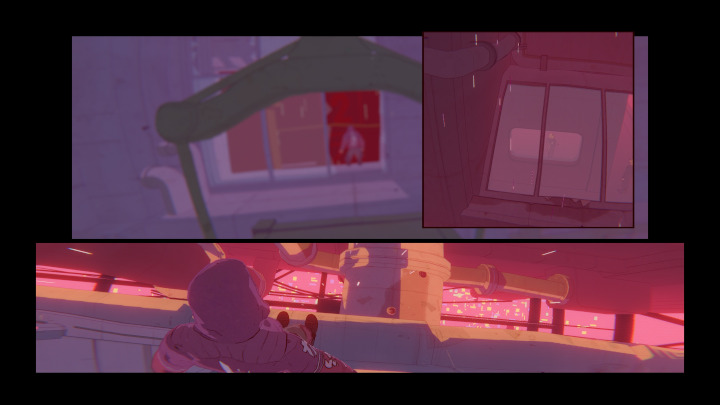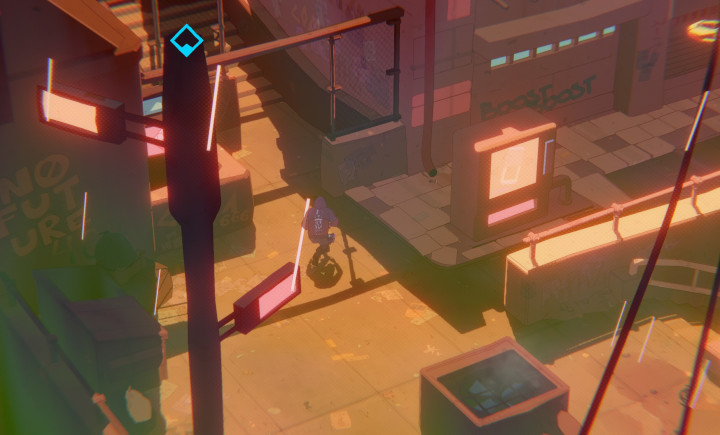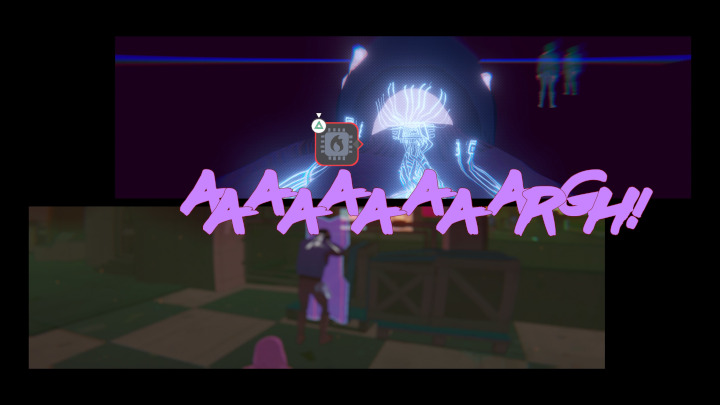
There were a few times during Foreclosed when I had to sort of stop and marvel at just how well the developers managed to make this game feel like an interactive comic book. Not since the original XIII, from way back in the PS2 era, has a game managed to pull this off to such great effect. Shoot, not even the recent XIII remake could hit the mark. But Foreclosed, a third-person stealth action title from Antab Studio and Merge Games, does so with style to spare.
I’m not usually a huge fan of cel-shaded graphics in general. To me, they feel like a gimmick, just a way to cover up what might otherwise be considered a less-than-good-looking game. But when they work really well, as is the case for games like Okami, The Legend of Zelda: Wind Waker, Ultimate Spider-Man, and the aforementioned XIII (the original game, I mean, not the awful remake), they can lend a game an animated-film look. And in the case of Foreclosed, the cel-shaded comic book paneling effect — coupled with its pastel color scheme — is hands-down its strongest selling point.
Foreclosed blends its soft pastel colors with its neon signs (a staple of the cyberpunk genre), only to bring it all together with the cel-shaded aesthetic. This really makes Foreclosed stand out in an increasingly crowded landscape of cyberpunk games that seem like they are in a race to see which one can burn your retinas the fastest. But then it also adds a cool paneling effect to the cutscenes, making it really feel like a comic book come to life. This allows the story to play out from multiple angles at once, showing points of interest or looming threats on the periphery without detaching players from protagonist Evan Kapnos.

At times, the camera might snap to a small-paned, side-scrolling perspective as Kapnos strolls along a corridor and hilariously attempts to do his best Max Payne impression (and unfortunately paling in comparison), en route to a nearby shuttle or elevator. All the while, other panels pop up to fill the remaining blank spaces on the screen, either with alternate angles of Kapnos or with the aforementiond shuttle or elevator. This sort of scuttles the story along, helping the player pinpoint exactly where they should go next. It also adds a bit of texture to scenes of inaction. This allows for an element of visual spectacle where other games might simply have the camera fixed behind Kapnos as he delivers his expository dialogue in an otherwise unnoteworthy location.
This design approach doesn’t revolutionize video-game storytelling, of course, but it does mix things up, and it even aids in the game’s storytelling. When the adjacent panels actually show impending bad guys, or just give you a lay of the land for what lies ahead, it feels like the game itself is an active participant, deciding what is important by focusing the player’s attention on it.
Foreclosed also does a great job of incorporating on-screen text accompanying sound effects. The Blam Blam Blam that sizzles next to your gun while you fire off a few pistol rounds, or the VRRR sound while riding in an elevator, or the AAAARGH! that ripples across the split-panel screen as you fry an unsuspecting guard’s neural chips with your stealth hacking takedown. It all adds to the overall package, and it’s not overdone to the point where it gets annoying. The default comic-book-style dialogue bubbles are also a nice touch.

So if cel-shaded, comic-book-style video games are your jam, I would definitely recommend Foreclosed. The combat leaves much to be desired and the checkpoint system can be unforgiving (to put it gently), but in the visual and storytelling departments, Foreclosed delivers the goods. This is a game that nails the comic-book look and feel and then some.
Disclaimer: I was given an early review code for Foreclosed for this article, but the opinions expressed here are my own.